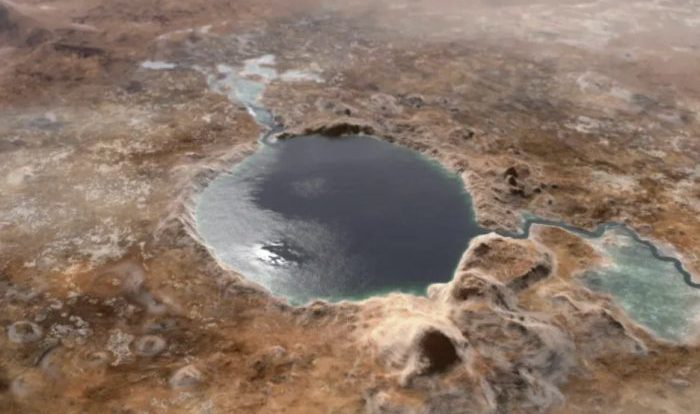A new study reveals lakebed minerals in Mars’s Jezero Crater, hinting at past microbial activity and habitable conditions.
Mars may once have hosted the right conditions for life. A groundbreaking study led by NASA and featuring critical analysis from Imperial College London has revealed minerals, organics, and sedimentary structures in the Jezero Crater that point to a once-habitable Martian environment — and potential signs of ancient microbial processes.
The findings, published in Nature, focus on a light-toned rock outcrop known as Bright Angel, located in the Neretva Vallis river valley. Using cutting-edge instruments aboard NASA’s Perseverance Rover, including PIXL and SHERLOC, researchers uncovered fine-grained mudstones and muddy conglomerates packed with silica and clays — minerals strongly linked to water-rich, habitable conditions.
“This is a very exciting discovery of a potential biosignature, but it does not mean we have discovered life on Mars,” cautioned Professor Sanjeev Gupta of Imperial’s Department of Earth Science and Engineering. “We now need to analyse this rock sample on Earth to truly confirm if biological processes were involved or not.”
Perseverance has been exploring Jezero Crater since 2021 as part of the Mars 2020 mission, chosen for its history as a vast lake and river delta system — prime targets in the search for ancient life. The rover’s core mission is to collect rock and soil samples for return to Earth in the coming decade.
What makes the new results extraordinary is their unexpected context: the mud-rich lake deposits were discovered at the bottom of a river valley, an environment typically associated with fast-moving water that washes fine sediments away. Instead, the evidence points to a low-energy, lake-like setting — precisely the kind of calm, stable habitat that could have supported microbial life billions of years ago.
“This is unusual but very intriguing,” said Alex Jones, PhD researcher at Imperial and NASA collaborator. “Our work indicates a past, low-energy lake environment — and that is precisely the kind of habitable environment we have been looking for on the mission.”
For planetary scientists, the Bright Angel discovery strengthens the case for Mars’s once-habitable past — and raises the stakes for future missions to bring these samples back to Earth for definitive testing.





